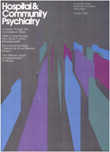A Comparison of Two Models of Education in Residential Treatment
Abstract
All kinds of residential treatment centers for children must deal with the question of how best to provide for the children's education. At least two models exist, the autonomous school and the integrated psychoeducational model. The author outlines the differences between the two models in terms of the students, staff, and goals of each program. The advantages of both models are also discussed in detail. The primary advantage of the autonomous school is the clear definition of staff roles, the author says, while the main disadvantage is the risk of separating education from treatment goals. The psychoeducational model helps in formalizing education as part of treatment, but may cause role diffusion among staff of different disciplines.
Access content
To read the fulltext, please use one of the options below to sign in or purchase access.- Personal login
- Institutional Login
- Sign in via OpenAthens
- Register for access
-
Please login/register if you wish to pair your device and check access availability.
Not a subscriber?
PsychiatryOnline subscription options offer access to the DSM-5 library, books, journals, CME, and patient resources. This all-in-one virtual library provides psychiatrists and mental health professionals with key resources for diagnosis, treatment, research, and professional development.
Need more help? PsychiatryOnline Customer Service may be reached by emailing [email protected] or by calling 800-368-5777 (in the U.S.) or 703-907-7322 (outside the U.S.).



